-
 Bitcoin
Bitcoin $115100
-2.99% -
 Ethereum
Ethereum $3642
-1.38% -
 XRP
XRP $3.027
-5.51% -
 Tether USDt
Tether USDt $1.000
-0.05% -
 BNB
BNB $763.4
-1.32% -
 Solana
Solana $177.2
-5.42% -
 USDC
USDC $0.9999
-0.02% -
 Dogecoin
Dogecoin $0.2247
-6.47% -
 TRON
TRON $0.3135
0.23% -
 Cardano
Cardano $0.7824
-4.46% -
 Hyperliquid
Hyperliquid $42.53
-0.97% -
 Stellar
Stellar $0.4096
-6.09% -
 Sui
Sui $3.662
-2.61% -
 Chainlink
Chainlink $17.63
-3.57% -
 Bitcoin Cash
Bitcoin Cash $536.3
2.94% -
 Hedera
Hedera $0.2450
0.34% -
 Avalanche
Avalanche $23.23
-3.15% -
 Litecoin
Litecoin $112.2
-1.23% -
 UNUS SED LEO
UNUS SED LEO $8.976
-0.30% -
 Shiba Inu
Shiba Inu $0.00001341
-2.72% -
 Toncoin
Toncoin $3.101
-2.44% -
 Ethena USDe
Ethena USDe $1.001
-0.05% -
 Uniswap
Uniswap $10.08
-1.97% -
 Polkadot
Polkadot $3.938
-2.77% -
 Monero
Monero $323.9
0.87% -
 Dai
Dai $0.9999
-0.02% -
 Bitget Token
Bitget Token $4.481
-1.69% -
 Pepe
Pepe $0.00001199
-5.94% -
 Aave
Aave $288.2
-0.68% -
 Cronos
Cronos $0.1279
0.36%
How to capture the precursor of the change of the 1-hour Bollinger Band narrowing + 30-minute K-line amplitude narrowing?
A Bollinger Band squeeze on the 1-hour chart combined with 30-minute amplitude compression signals low volatility and a potential breakout, but confirm with volume and RSI to avoid false moves.
Jul 24, 2025 at 01:07 pm
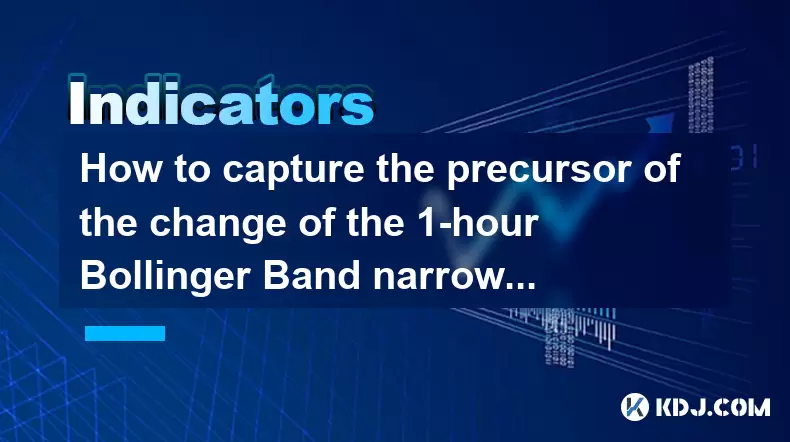
Understanding the Bollinger Band Squeeze in a 1-Hour Timeframe
The Bollinger Band squeeze is a technical phenomenon indicating a period of low volatility that often precedes a sharp price movement. On the 1-hour chart, this occurs when the upper and lower bands converge toward the middle band (20-period simple moving average), signaling that price fluctuations are tightening. Traders monitor this narrowing because it frequently foreshadows a breakout. The key to capturing the precursor lies in identifying the contraction phase before the actual breakout. This requires setting up proper alerts or manually analyzing the bandwidth—the difference between the upper and lower bands divided by the middle band. When the bandwidth drops below a historical threshold, such as its lowest value in the past 20 to 50 periods, it indicates a squeeze is forming.
To detect this early, traders can use a custom script or indicator on platforms like TradingView. For example, Pine Script allows the creation of a condition that triggers when the bandwidth is less than a moving average of bandwidth over the last 30 candles. This helps spot the early compression before price action responds. The narrower the bands, the higher the probability of a strong directional move. However, the direction is not indicated by the squeeze alone—additional confirmation is required.
Monitoring 30-Minute K-Line Amplitude Compression
While the 1-hour Bollinger Band shows volatility contraction, the 30-minute K-line amplitude provides a finer-grained view of short-term price action. The amplitude refers to the range between high and low within each 30-minute candle. A narrowing amplitude means that price is trading in a tighter range, often reflecting indecision or consolidation. To quantify this, calculate the average true range (ATR) over 14 periods on the 30-minute chart and observe when it begins to decline significantly.
Alternatively, compute the percentage change from high to low for each 30-minute candle and compare it to a rolling average. When recent candles show ranges below, for example, 70% of the 20-candle average range, it signals amplitude compression. This can be visualized by plotting a histogram of daily or hourly range percentages. A cluster of small-range candles on the 30-minute chart, especially when aligned with the 1-hour Bollinger squeeze, increases the reliability of an impending breakout.
Synchronizing Timeframes for Early Signal Detection
For a robust precursor signal, both conditions must align: 1-hour Bollinger Band narrowing and 30-minute K-line amplitude compression. This multi-timeframe confluence enhances the probability of a breakout. To set this up:
- Open both the 1-hour and 30-minute charts side by side.
- Apply the Bollinger Bands (20,2) on the 1-hour chart and monitor the distance between upper and lower bands.
- On the 30-minute chart, add a range indicator, such as a moving average of candle body heights or ATR(14).
- Use conditional coloring to highlight when both conditions are active simultaneously.
Traders can also create an alert system. For instance, in TradingView:
- Write a Pine Script that checks if the 1-hour bandwidth is below its 50-period SMA.
- Simultaneously verify if the 30-minute ATR(14) is below its 20-period average.
- Trigger a visual or audio alert when both are true.
This synchronization ensures that volatility is contracting across two timeframes, increasing the chance that the next move will be substantial.
Filtering False Signals with Volume and RSI
Not every squeeze leads to a breakout. Some result in false breakouts or sideways continuation. To improve signal quality, integrate volume analysis and momentum indicators. During a true squeeze precursor, trading volume often declines, reflecting low market interest. A sudden spike in volume on a breakout candle confirms participation.
Add the volume oscillator to the 1-hour chart and observe if volume bars are shrinking during the squeeze. When the price eventually moves beyond the Bollinger Bands, check if volume exceeds the 5-period average. Similarly, use RSI (14) on the 1-hour chart. If RSI is near 50 during the squeeze, it suggests neutrality, making the breakout direction uncertain but valid. If RSI is near 30 or 70, it may bias the breakout direction—oversold conditions favor upward moves, overbought favor downward.
Avoid entering trades solely based on the squeeze. Wait for volume confirmation and a close outside the Bollinger Band on the 1-hour chart. This reduces whipsaws.
Executing Entry and Managing Risk
Once both the 1-hour Bollinger Band squeeze and 30-minute amplitude compression are confirmed, prepare for entry. Do not enter during the squeeze—wait for the breakout candle to close. The strategy involves:
- Placing a buy stop order slightly above the high of the breakout candle if the price moves upward.
- Placing a sell stop order slightly below the low of the breakout candle for a downward move.
- Setting a stop-loss just inside the opposite side of the Bollinger Band or at the midpoint of the recent consolidation range.
- Using a trailing stop based on ATR to lock in profits as the trend extends.
Position size should reflect the volatility contraction. Since the squeeze often leads to extended moves, allocating a slightly larger position with tight initial risk can improve risk-reward ratios. For example, risk 1% of capital with a target of 3x the stop distance.
Backtesting the Combined Signal
To validate this strategy, conduct a historical backtest on major cryptocurrency pairs like BTC/USDT or ETH/USDT. Select a 6-month period and manually mark all instances where:
- The 1-hour Bollinger Bandwidth was below its 50-period average.
- The 30-minute ATR(14) was below its 20-period average for at least three consecutive candles.
- A breakout occurred within the next 1 to 3 candles.
Count the number of successful breakouts (price moving at least 2x the ATR in the breakout direction) versus failed ones. Calculate win rate, average gain, and maximum drawdown. Optimize parameters such as bandwidth threshold or ATR period to improve results. Use this data to refine entry rules and filter conditions.
Frequently Asked Questions
Q: Can the Bollinger Band squeeze occur without a subsequent breakout?
Yes, the squeeze may lead to a range continuation instead of a breakout. This happens when price remains within the bands after narrowing, often due to lack of market catalysts. In such cases, the volatility contraction resets without a significant move.
Q: How do I adjust the Bollinger Band settings for different cryptocurrencies?
The default (20,2) works for most, but highly volatile assets like altcoins may benefit from a longer period, such as (50,2), to smooth noise. Test variations using walk-forward optimization to find the best fit per asset.
Q: Is the 30-minute amplitude more important than the 1-hour Bollinger signal?
Neither is superior. The confluence of both increases reliability. Relying on one may generate false signals. Always use them together for higher-confidence setups.
Q: What tools can automate this detection process?
TradingView’s Pine Script allows coding custom alerts that monitor both conditions. Third-party bots like 3Commas or HaasOnline can execute trades based on webhook alerts from such scripts, enabling semi-automated responses.
Disclaimer:info@kdj.com
The information provided is not trading advice. kdj.com does not assume any responsibility for any investments made based on the information provided in this article. Cryptocurrencies are highly volatile and it is highly recommended that you invest with caution after thorough research!
If you believe that the content used on this website infringes your copyright, please contact us immediately (info@kdj.com) and we will delete it promptly.
- Kiyosaki's Crypto Playbook: Ditching Paper for Real Assets Like Bitcoin
- 2025-07-25 22:30:11
- Satoshi-Era Whales Stir the Bitcoin Pot: What's the Deal?
- 2025-07-25 22:30:12
- Pi Coin Value in Indian Rupees (INR) 2024: Decoding the Hype
- 2025-07-25 21:45:50
- Crypto Investing: Top Picks and Meme Coin Mania in '25
- 2025-07-25 21:52:07
- Ark Invest's Portfolio Rebalance: Coinbase, Block, and the Crypto Shift
- 2025-07-25 21:52:07
- Bitcoin's Wild Ride: Sell-offs, Volatility, and What's Next
- 2025-07-25 21:55:18
Related knowledge

How to interpret that the KDJ D line is downward for a long time but the price is sideways?
Jul 25,2025 at 07:00pm
Understanding the KDJ Indicator and Its ComponentsThe KDJ indicator is a momentum oscillator widely used in cryptocurrency trading to assess overbough...

What does it mean that the KDJ indicator forms a double bottom at a low level?
Jul 25,2025 at 05:08pm
Understanding the KDJ Indicator in Cryptocurrency TradingThe KDJ indicator is a momentum oscillator widely used in cryptocurrency trading to identify ...
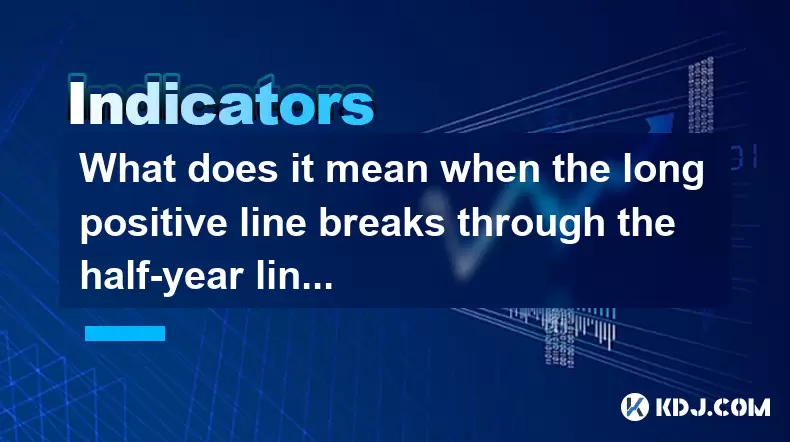
What does it mean when the long positive line breaks through the half-year line and then steps back?
Jul 25,2025 at 06:49pm
Understanding the Long Positive Line in Candlestick ChartsIn the world of cryptocurrency trading, candlestick patterns play a vital role in technical ...
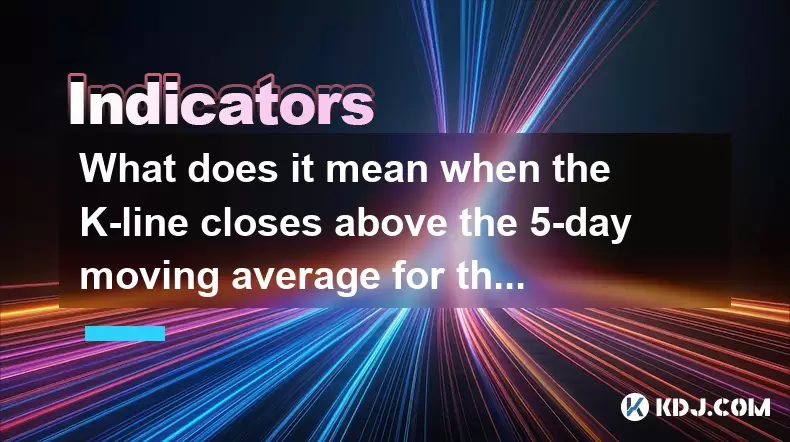
What does it mean when the K-line closes above the 5-day moving average for three consecutive days?
Jul 25,2025 at 10:07pm
Understanding the K-line and 5-day Moving AverageThe K-line, also known as a candlestick, is a critical charting tool used in technical analysis to re...
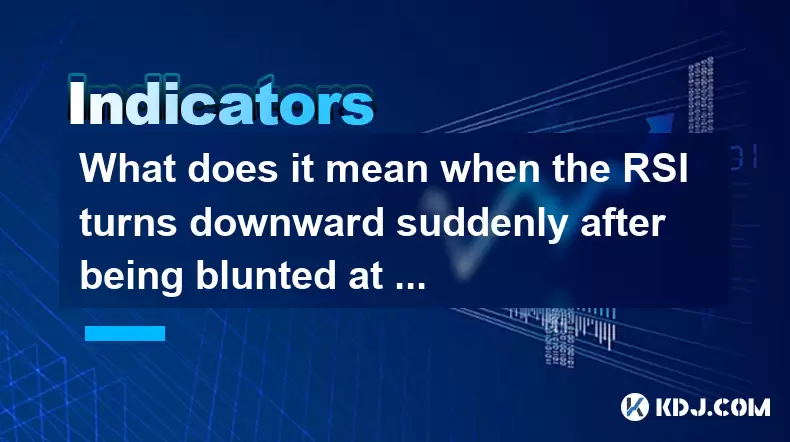
What does it mean when the RSI turns downward suddenly after being blunted at a high level?
Jul 25,2025 at 04:00pm
Understanding the RSI and Its Role in Technical AnalysisThe Relative Strength Index (RSI) is a momentum oscillator that measures the speed and change ...
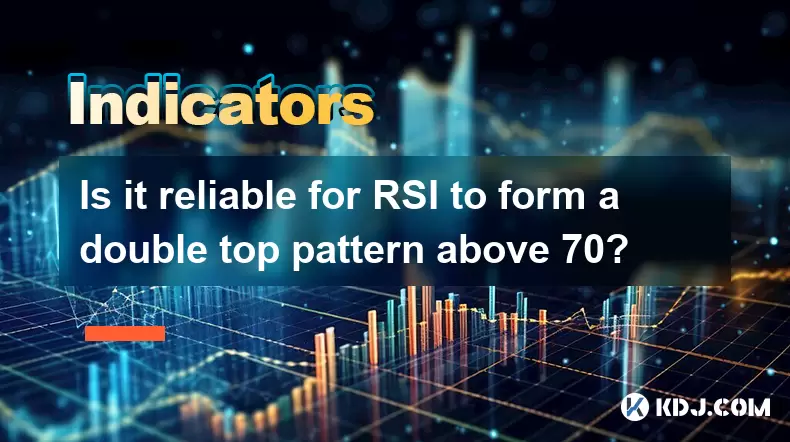
Is it reliable for RSI to form a double top pattern above 70?
Jul 25,2025 at 04:49pm
Understanding the RSI Indicator and Its Role in Technical AnalysisThe Relative Strength Index (RSI) is a momentum oscillator that measures the speed a...

How to interpret that the KDJ D line is downward for a long time but the price is sideways?
Jul 25,2025 at 07:00pm
Understanding the KDJ Indicator and Its ComponentsThe KDJ indicator is a momentum oscillator widely used in cryptocurrency trading to assess overbough...

What does it mean that the KDJ indicator forms a double bottom at a low level?
Jul 25,2025 at 05:08pm
Understanding the KDJ Indicator in Cryptocurrency TradingThe KDJ indicator is a momentum oscillator widely used in cryptocurrency trading to identify ...

What does it mean when the long positive line breaks through the half-year line and then steps back?
Jul 25,2025 at 06:49pm
Understanding the Long Positive Line in Candlestick ChartsIn the world of cryptocurrency trading, candlestick patterns play a vital role in technical ...

What does it mean when the K-line closes above the 5-day moving average for three consecutive days?
Jul 25,2025 at 10:07pm
Understanding the K-line and 5-day Moving AverageThe K-line, also known as a candlestick, is a critical charting tool used in technical analysis to re...

What does it mean when the RSI turns downward suddenly after being blunted at a high level?
Jul 25,2025 at 04:00pm
Understanding the RSI and Its Role in Technical AnalysisThe Relative Strength Index (RSI) is a momentum oscillator that measures the speed and change ...

Is it reliable for RSI to form a double top pattern above 70?
Jul 25,2025 at 04:49pm
Understanding the RSI Indicator and Its Role in Technical AnalysisThe Relative Strength Index (RSI) is a momentum oscillator that measures the speed a...
See all articles

























































































